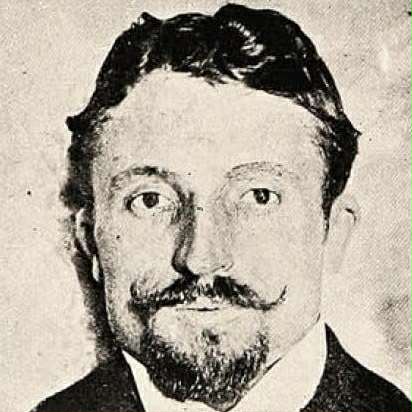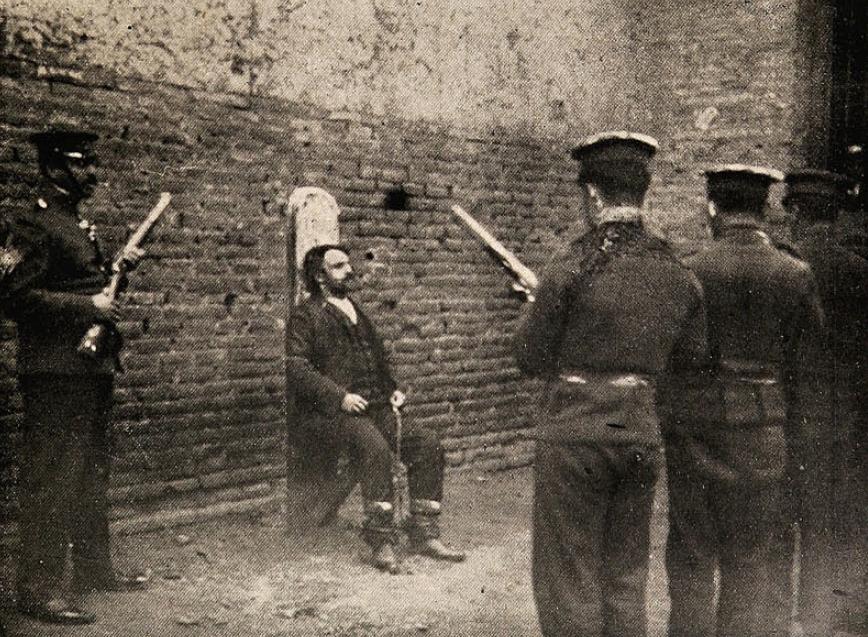
1867 - 1907
Louis-Amadeo Brihier Lacroix
Summary
Name:
Nickname:
Chilean Robin Hood / Émile Dubois / Emilio Morales / Emile MurraleyYears Active:
1882 - 1906Birth:
April 29, 1867Status:
ExecutedClass:
Serial KillerVictims:
6Method:
Stabbing / Mutilation / BludgeoningDeath:
March 26, 1907Nationality:
France
1867 - 1907
Louis-Amadeo Brihier Lacroix
Summary: Serial Killer
Name:
Louis-Amadeo Brihier LacroixNickname:
Chilean Robin Hood / Émile Dubois / Emilio Morales / Emile MurraleyStatus:
ExecutedVictims:
6Method:
Stabbing / Mutilation / BludgeoningNationality:
FranceBirth:
April 29, 1867Death:
March 26, 1907Years Active:
1882 - 1906bio
Louis-Amadeo Brihier Lacroix was born on April 29, 1867, in France to Joseph Brihier and Marie Lacroix. From an early age, his life was marked by violence. At the age of fifteen, he killed the father of his girlfriend, a retired police officer—an act that set the tone for a life defined by deception, movement across borders, and escalating crime. After the incident, he fled his home and began working in the Courrières coal mines, located in northern France. During his employment there, a mine foreman was found dead under suspicious circumstances, further implicating Lacroix in violent acts even before leaving Europe.
Following a two-month prison term for theft, he departed France entirely. Around the age of 20, he traveled to South America under the assumed name Émile Dubois, beginning his new life as a fugitive. He first settled in Venezuela before moving across other parts of the continent. While not much is documented about his early years in South America, reports confirm that by 1903 he was involved in robbery and murder. That year, with the assistance of two lovers — Ursula Morales and Catalina — he killed a young Peruvian engineer in a brothel trap in the Bolivian city of Oruro. The victim’s life savings were stolen, revealing that Dubois’s crimes were not only driven by violence but also profit.
As he continued moving southward, Dubois reached Chile, where his name would ultimately become infamous. Though he posed as a charismatic and sophisticated figure, his hidden identity and violent tendencies made him a danger to wealthy merchants, particularly foreigners involved in trade. His preference for targeting European businessmen further fueled later myths that painted him as a vigilante figure rebelling against economic elites. Despite his background of violence and deceit, Émile Dubois would later be romanticized in Chilean culture as a symbol of proletarian justice.
murder story
Dubois' crime spree in Chile began with a flourish of brutality. On January 7, 1905, the mutilated body of Ernesto Lafontaine, a French merchant and former mayor of Providencia, was found in his office in Santiago by his friend Roman Díaz. Several items—a gold watch, safe keys, and cash—were missing. That gold watch later became pivotal evidence linking Dubois to the crime during his trial.
He then moved to the port city of Valparaíso, where the killings escalated. On September 4, 1905, Dubois killed Reinald Tillmanns, a German trader—stabbed for profit. Exactly a month later, on October 4, he murdered Gustave Titius, a German businessman, in a grotesque display that included mutilation of the victim’s hands.
The spree continued into 1906. On April 4, near the entrance of his shop, Dubois and Isidore Challe, a French merchant, crossed paths—Challe reportedly denied him financial help and humiliated Dubois. Revenge turned lethal: six knife wounds ended Challe’s life.
The final blow came during a failed attempt—a June 26, 1906 attack on Charles Davies, an English dentist. Dubois slashed at him, but Davies survived and raised the alarm, prompting a public chase. Citizens cornered and captured Dubois, ending his reign.
During the Valparaíso earthquake of 1906, the prison where Dubois was held had its walls crumble. Amid the chaos, Dubois was discovered under a pile of canned goods, clean-shaven, shackles gone, skin seemingly peaceful. He denied any escape attempt, claiming confinement even through the devastation.
He married his partner, Ursula Morales, the day before his execution and formally acknowledged their son, Luis, born in January 1903.

On 26 March 1907, facing a firing squad. He told the judge to "abrevie y llegue al final" (“make it quick and get to the end”), refused a blindfold, and personally instructed soldiers to aim for his heart before giving the final nod toward execution.